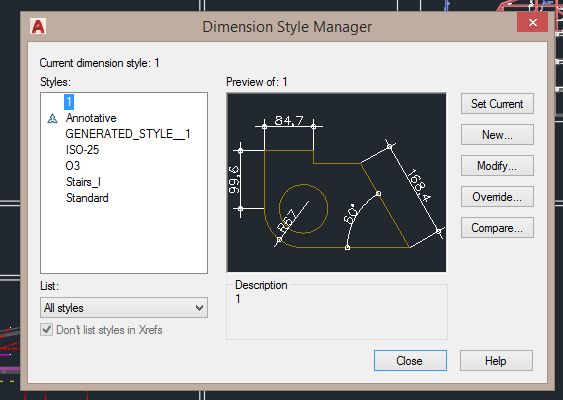
Mechanical Projects (Surface Modeling Solid Modeling). Architectural Projects (Residential Dwelling Commercial Building). Composite Solids: Creation and Modification.
Autocad dimension full#
It features more than 600 illustrations of 3D drawings graduated lab exercises a full section (6 chapters) of special step-by-step Application Projects (architectural, mechanical, structural, and civil) 3D Viewpoint boxes with tips and hints and an overview of application programs used with AutoCAD-e.g., Mechanical Desktop and 3D Studio MAX and R4.
Autocad dimension how to#
Based on AutoCAD 2000, it explores the theory behind 3D modeling, how to prepare for 3D construction, the various kinds of 3D construction, and how to effectively enhance and present 3D models. Here, we have used the linear dimension, so further dimensions will be considered linear by default.Ideal for novice and practiced CAD users alike, AutoCAD Release 15 blends theory and practical applications in a hands-on, lab- and exercise-intensive look at all the important concepts needed to draw in true 3D. The dimension will automatically start from the starting point of the last dimension. Here, we will select the first linear dimension created in the above figure.

The dimension will be measured from the base of the first dimension. Continue specifying second extension line origin points, as shown in the below image:.Here, we have used the angular dimension, so further dimensions will be considered angular by default. Here, we will select the first angular dimension created in the above figure. The figure will now look like the below image: Continue specifying the second extension line origin points, as shown in the below image:.Here, we have used the linear dimension, so further dimensions will be considered linear by default. The dimension will automatically start from the endpoint of the last created dimension, as shown in the below image: Type DCO or DIMCONTINUE on the command line or command prompt.It will work as a base for continue dimension. Here, we have created a linear dimension. We need to select the base of the dimension from the ordinate, angular, or linear for the continue dimension.Ĭonsider the below image: Note: The precision value of decimal points can be modified, which is discussed in the topic Dimension Style Manager. It will continue to create dimensions from the last ordinate, angular, or linear created dimension, which lines up automatically. The shortcut command of the continue dimension is DCO.

The dimension will be measured from the current point. We can select the appropriate dimension accordingly. Click on the drop-down list of the continue dimension, as shown in the below image:.



 0 kommentar(er)
0 kommentar(er)
